If you’ve ever thought about some incubating chicken eggs and starting a flock of your own, here’s a quick primer on incubating chicken eggs. As of this writing, this year’s batch just passed the two-week mark. How are they so far?
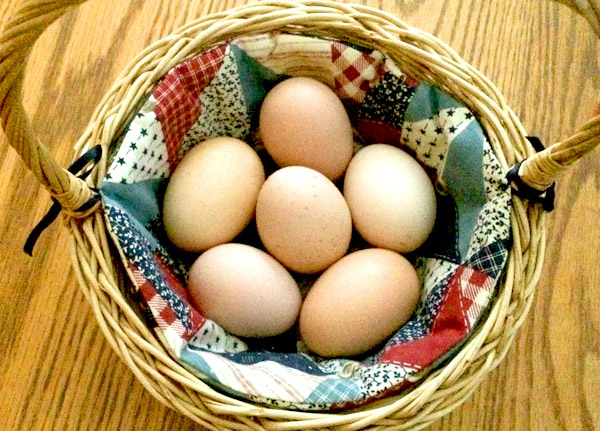
Of course, you can start a flock by skipping eggs altogether and buying chicks from a feed store or hatchery. That is how we started. If you are keen to hatch them instead, you can buy fertilized eggs from some hatcheries. If you know someone with a healthy flock — and has a rooster — you can ask them for some eggs. Odds are, they will be fertilized. The key is: fertilized.
A lady at church was asking just this past Sunday if eggs are automatically fertilized when laid. Her mental model was mammalian. Something doesn’t ‘come out’ unless fertilization happened first. It doesn’t work that way with chickens.
The truth is, hens will lay eggs on a schedule (up to one a day), fertilized or not. Commercial egg farms don’t need roosters. So, store-bought eggs are almost never fertilized. Even if they were, the prolonged refrigeration stops their viability.
A fertilized egg can remain viable at room temperature for four or five days before fertility begins to drop off. In nature, a hen would lay an egg a day (or so) for several days before having a “clutch” to start sitting on. All those eggs are fine sitting in the nest at ambient temperatures. Even though fertilized, their clocks have not started. For that, they need prolonged warmth to trigger the start.
In nature, this would be the broody hen laying on the clutch of eggs. In lieu of a broody hen, it would be the day the eggs go into the incubator. The prolonged warmth triggers the tiny fertilized spot on the yoke to start growing into a baby chick.
The Incubator
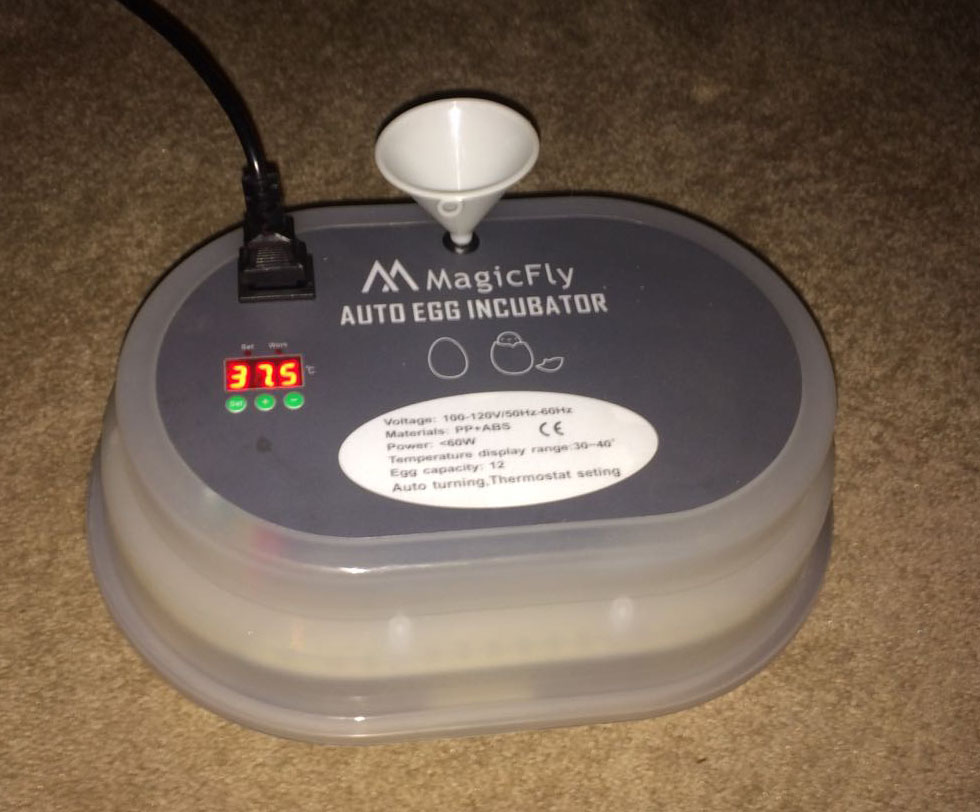
There are many sizes and models of incubators out there. Some are built for small batches, some for large batches. Some have fans, some are still-air. Some have egg turners: some do not. I bought a smaller one with a fan and egg turning, as it better fits my use.
With a flock of 8 hens or so, I only need 2 or 3 hens a year for my yearly replacement program. Egg laying drops off significantly after a hen is 3 years old. So, a third of the flock are new, a third are 1 year old, a last third at 2 or 3 yrs old. This last third of the flock in their final summer and will be “retired” to freezer camp in the fall. The new chicks from the spring hatch move into the coop to take the retirees’ places.
Since I only want a few hens, a smaller incubator works best for me. I’ve used larger ones. (The Hova-Bator is a popular model. I just don’t need 48 chicks.) Smaller batches in larger incubators gave me mediocre results in the past. Maintaining even temperatures seems tougher to accomplish in a mostly-empty large incubator.
Temperature
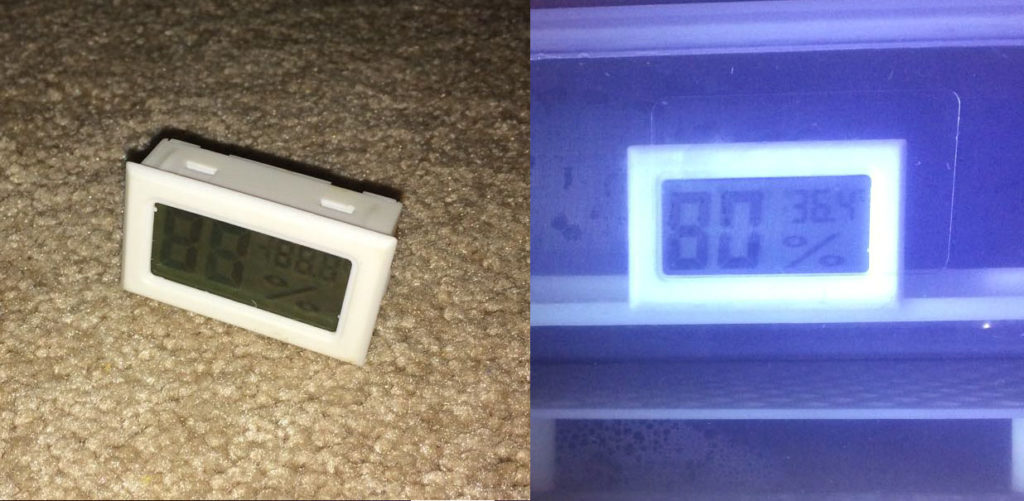
THE crucial element is maintaining the right temperature for the 21 days. The textbook temperature is 99.5°F. (37.5C) You can vary this up or down a degree without great risk, but too warm for too long will kill the embryos. Don’t set your incubator where the sun will fall on it. This can raise the temperature inside too high too fast.
Too cool will kill them too. The frequent cause of this is curious humans taking the cover off too much to see inside, or taking too long at manual egg turning. Keep the cover on as much as possible. Keep the heat in. Monitor the temperature, ideally with a second thermometer that you trust. The built-in thermometers have been known to err.
Egg Turning
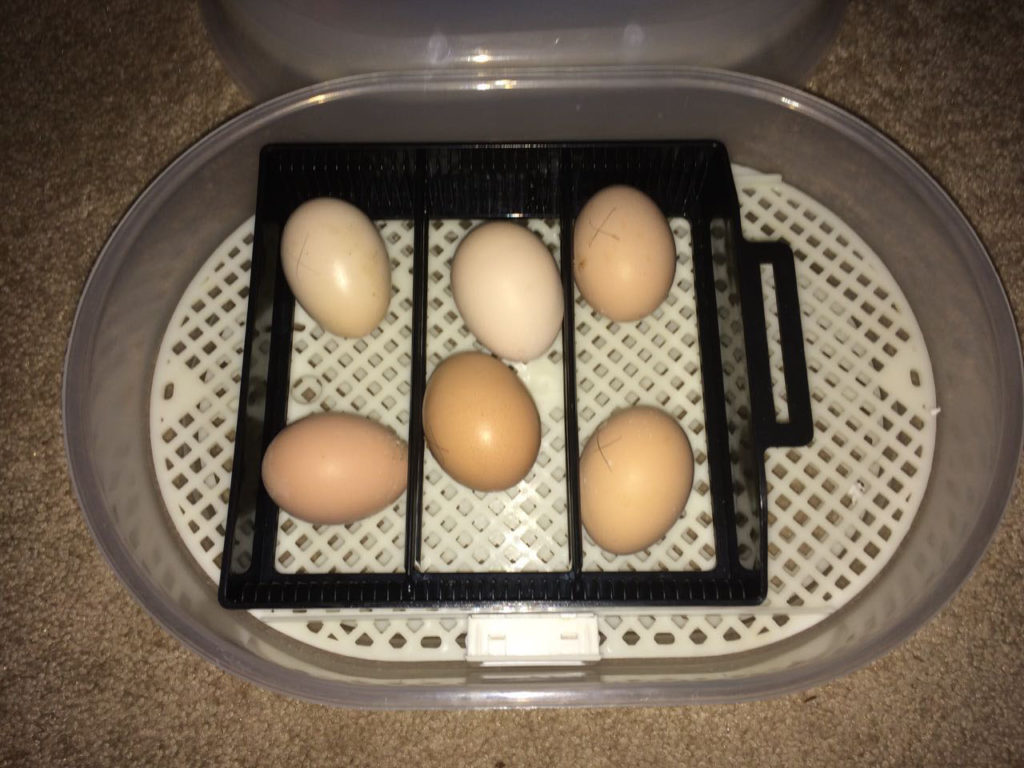
The second important element is egg turning. Incubating eggs must be turned regularly to prevent the embryo from sticking to the shell membrane. A mother hen turns her eggs by instinct. An incubator has to do so mechanically. You can turn them by hand (done that too). It means twice-a-day attention, so it’s a bit more of a time commitment. My little incubator doesn’t turn the eggs twice a day so much as it’s constantly rolling them back and forth very slowly. A peg on a motorized wheel acts like a cam. It slowly slides the frame back and forth. Pretty simple (foolproof)
Humidity
Also important, but a bit less fussy, is humidity. Eggs need controlled humidity. In the first 18 days, they need 40-50% humidity. A bit drier doesn’t hurt them, but too humid does. The slightly drier air causes the egg to develop a larger air cavity as internal moisture vapor seeps out through the shell. The chick will need a larger air cavity for hatching. Too humid in the first 18 days, and the air cavity will be too small.
In the final three days, the eggs need 75-80% humidity. The air cavity has already developed. The higher humidity helps soften the shell so the chick can pip through. Too dry in the last days, and the shell can be too tough for them to break.
Some incubators come with a humidity gauge. How accurate they are, is questionable and should be tested. Mine did not come with a humidity sensor, so I bought a separate one. I can see it through the somewhat-clear plastic walls. How much water you need to add to your incubator will depend on your environment. (dry house, damp house, etc.) There’s no set rule. For where it is in my house, a half teaspoon twice a day seemed to be enough.
Candling
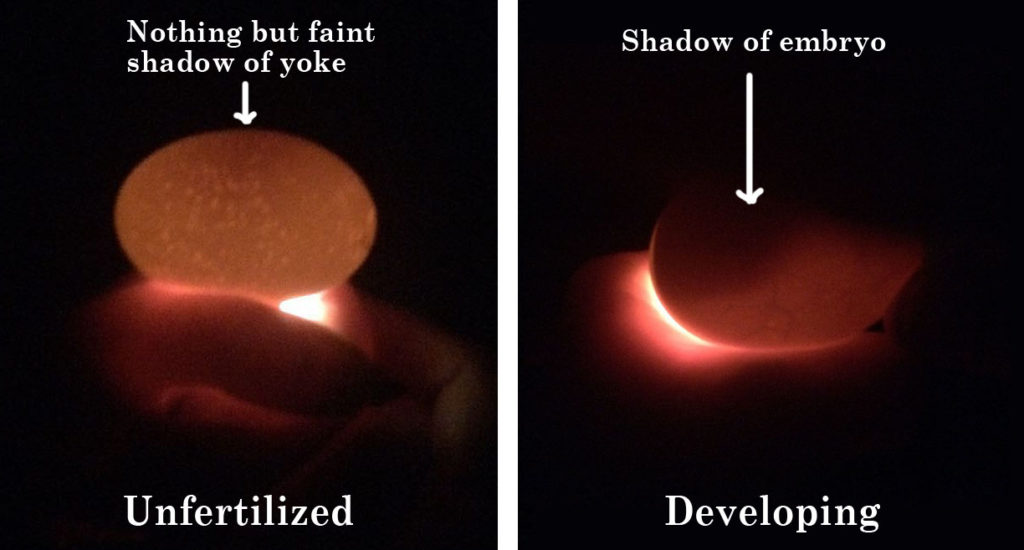
After about ten days in the incubator, you can candle the eggs. This past Wednesday was the time. I used a small tactical flashlight with it’s killer-bright LED. My hand made a little light-tight (sort of) cradle for the egg. My hens lay brown eggs, which are tougher to candle. It’s got to be a pitch-black house to see anything. Even then, it’s murky.
An unfertilized egg will read “clear”. (see photo) I had one in my batch of seven. Rats. The rest were all dark except for the air cavity. Turning them slowly, you could sometimes get a half-dark, half-light condition as the embryo was on one side, not the bottom. If you look carefully, you can see that there are blood vessels along the egg shell wall. It’s not easy to see in this photo, but they’re there. They are part of the placental growth and good news. They indicate life!
21 Days
Chicken eggs are pretty consistent to hatch 21 days after you started them incubating. Things can vary a little. If your incubator runs a bit warmer, they could hatch a little sooner. Cooler than 99.5 could mean maybe a day later. Too much deviation from the proper temperature and your success rate drops off quickly. If an egg (or two) hasn’t shown signs of hatching by day 23, it’s probably not going to.
Home Stretch. No Turning
This coming Saturday will be the 21 day mark. This Wednesday will be Day 18. That’s when I remove the auto-turning tray. Eggs should NOT be turned in the last three days so the chicks can orient themselves to pip “up”.
I’ve got the brooder box, heat emitter, feeder and waterer all ready to deploy. There’s wisdom in the old saying about not counting your chickens until they hatch. Some develop, but still fail to hatch. Some start to hatch, but die trying. I’ll post how the hatch went when they’re done.

I set my eggs no n incubator at 37..5c and humidity at 55c will my chick hatch.
Hi Dhanmatee,
The biggest factor is whether the egg(s) were fertilized or not. If not, the temp and humidity won’t matter. If they are fertilized, 37.5°C and 55% humidity are good. Even if you have a rooster who is (apparently) doing his roosterly business, you can still end up with eggs that are not fertilized. He may not have “serviced” a particular hen recently enough. He might be getting old and less potent. Then too, some developing chicks-in-eggs are genetically weak or flawed and die in the shell. There are a lot of factors we don’t have control over. Hence the old maxim of not counting our chickens until they hatch.
Hope this helps.
That is a bunch of BS… I incubate at humidity of 10-35% but the drier the better at a temp of an average pf 98.5! And do not have any of the problem you claim!
I also don’t do lock down… I don’t count day to hatch and I never add water to the incubator!
Hi John,
Thanks for commenting, but “BS?” That seems a bit harsh. You say you incubate at 98.5. My post said 99.5 but also that a degree or so wasn’t critical. That would include 98.5. You run 35% humidity and I said 40-50 and that it wasn’t too critical. (too much humidity as a problem). Are we really so far apart to warrant “BS”?
When you say you do not have any of the problems I cite, does that mean you get 100% hatch rates? What incubator are you using? Does it have an automatic egg turner? Just curious.